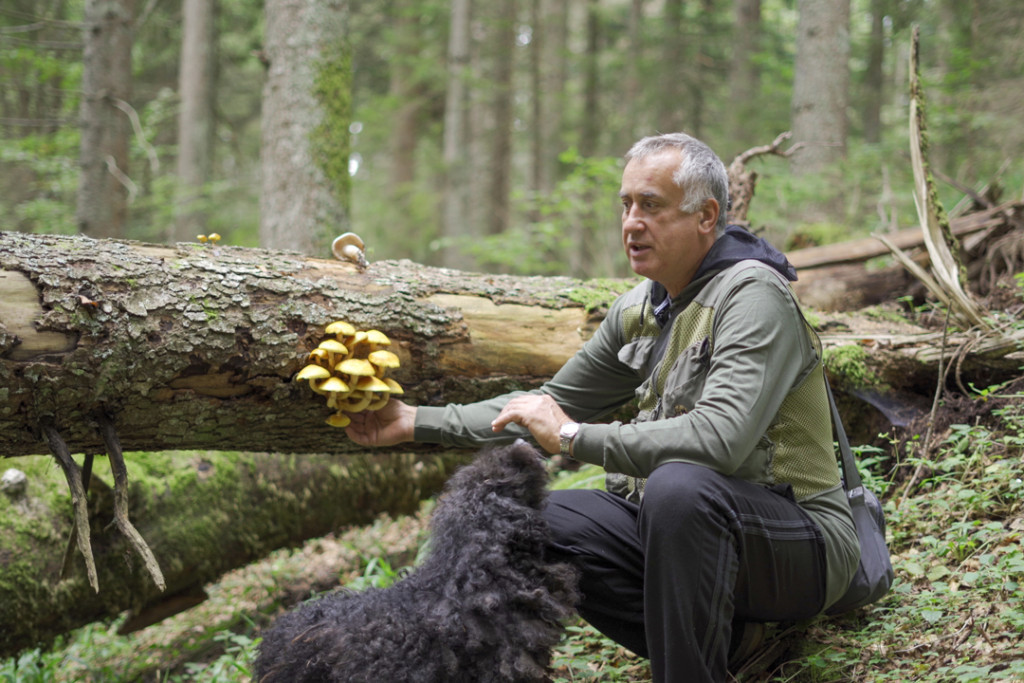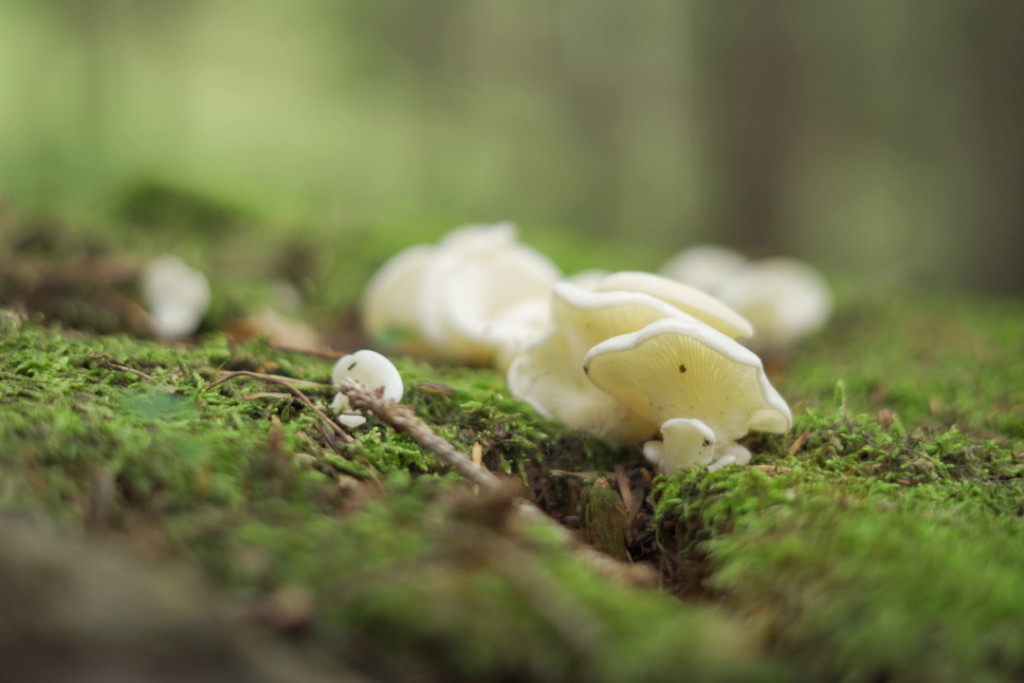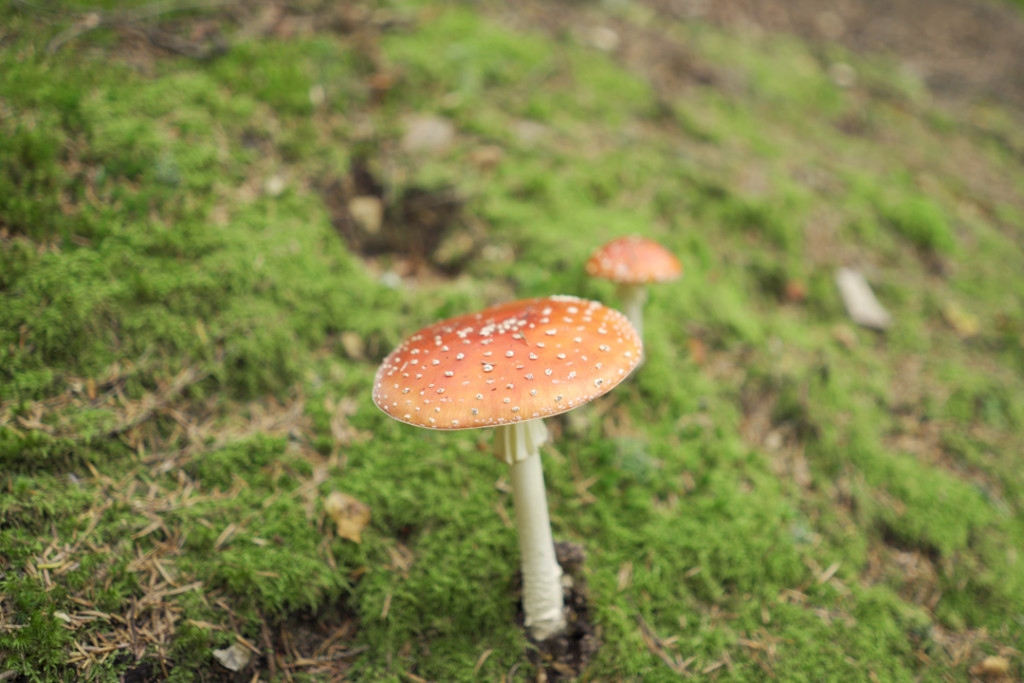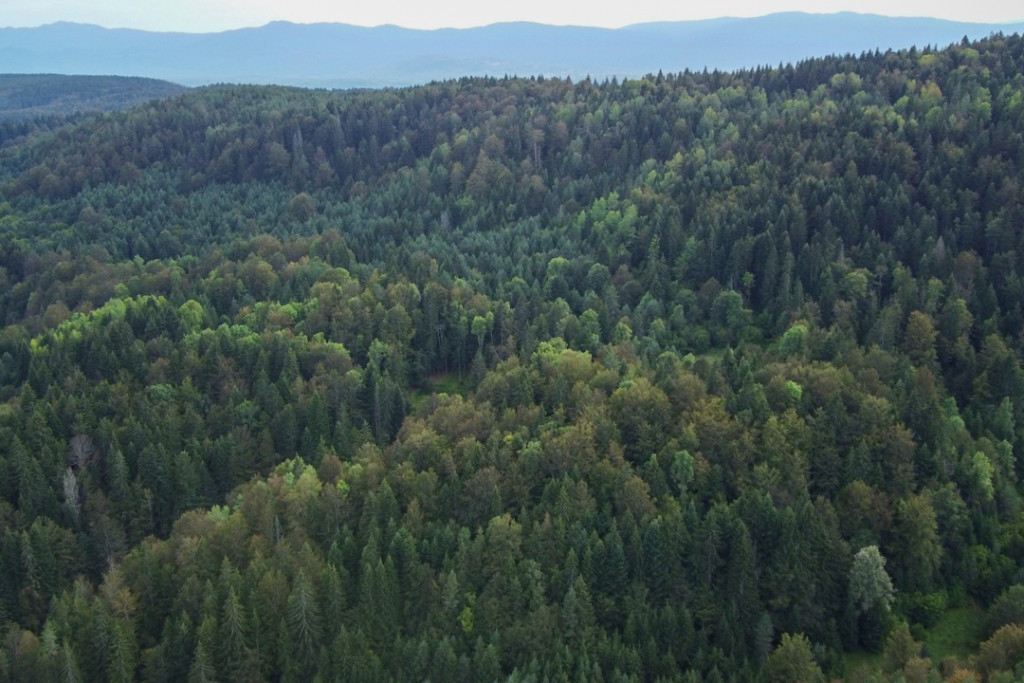
Author: Osman Zukić | Photography: Almir Kljuno
"I’ve studied French, Czech, Russian... All to be able to learn more about mushrooms, the distinctions between them, because there’s no one to ask. No one is interested in mushrooms. Mycology is very complex. There are no proper experts to teach students about fungi."
Radoslav Gašić begins his story. He entered the world of mushrooms as a young man, in 1978. A biology professor, his neighbour at the time, taught him the basics. Radoslav was born and raised in Mrkonjić Grad.
"There are three kingdoms - plants, animals and fungi. It is assumed that fungi appeared after the Carboniferous period. Because, you see, there has been no more coal formation after the Carboniferous period.
He found and identified 1,700 species
He does not hunt for mushrooms for food or to sell them, but to see what is there. He describes himself as an amateur mushroom researcher.
“I wanted to see that diversity, to see what can be found in these parts. That’s what had drawn me into that universe. To this day, I find that world fascinating and I'm still exploring and always finding new species."

So far, he has found, photographed, examined under the microscope, and identified close to one thousand seven hundred species.
“These are the ones for which I can with confidence say I know what they are”.
However, there are still about two hundred species identified only to the genus level.
"I simply don't know what they are."
He sent photos to his colleagues in Serbia and Croatia, and they told him they had never seen anything like it.
"They say to me: For heaven’s sake, Radoslav, where did you find these, on Mars!?"
Like most other mushrooms, he found them on Lisina. It is a mountain between Mrkonjić Grad and Šipovo. Its highest peak, Bandira, is 1,500 meters above sea level. It’s a non-porous terrain composed mainly of silicate and dolomite with water coming down all its sides. Over three hundred and fifty springs have been discovered on the mountain.
Lisina boasts a mixture of fir, spruce and beech forests. Apart from being a habitat for the black bear, the mountain is famous for its diversity of microflora. So far, over a thousand plant species have been identified in that area.
"Let's go to Lisina so you can see all that they didn't want to protect."
Rare and endangered species
Almost an hour's drive on a gravel road. We enter the heart of the mountain. His dog, Mališa (Tiny), is with us as well. He bought him from a breeder in Niš and he helps him look for some underground species of fungi.
"Over a thousand species were found in these four sections, which we believe should be a protected natural area, a nature park where mushrooms would be fully protected."
And indeed, wherever you look - you see mushrooms. Take a couple of steps in any direction and you will find at least ten species.
"Isn't that a gift from nature, our natural wealth that should be preserved for generations that come after us? Or should we cut down everything and turn it into money that will be spent on all kinds of rubbish?"

Some rare species were found on Lisina, such as the violet chanterelle (Gomphus Clavatus) and the imperial mushroom (Catathelasma Imperiale), and the area is registered as the fourth location in Europe where the Oregon black truffle (Leucangium Carthusianum) can be found.
"I jumped for joy when I found the first violet chanterelles; it's a beautiful mushroom. It is even edible, but it should not be foraged, it is a rare and endangered species."
He found various types of porcini mushrooms here. He shares the joy he felt when he found one hadn’t seen since 2005.
“It was as if I had met a dear friend whom I had not seen for a long time."
To preserve all these species, large areas should be protected. In this regard, BiH lags far behind other European countries with only four percent of protected territory. Slovenia, for example, protected about seventy percent of its territory.
"Fungi world is the one we know very little about, we treat them irresponsibly and the question is how much we know about the role of these creatures in nature. Mushrooms take care of themselves, they don't need outside help, they had existed long before human beings appeared."
Up to one kilo
In Republika Srpska, a law has recently come into force that prohibits any person from taking more than one kilo of mushrooms from the forest. This also pertains to other forest fruits - blueberries, blackberries, herbs.
"But you know what? It is difficult to eradicate fungi by collecting the spore-bearing fruiting bodies, and what we harvest and consider mushrooms are only their spore-bearing bodies. I wouldn't say, don't pick them at all now, let's leave them all. After all, they will naturally decay in the forest; when they eject the spores, they are done."
However, it is much more harmful to cut down mycorrhizal trees.
"When you cut down an oak, a beech or a spruce, all the fungi that are a part of mycorrhizal network that connect trees are killed. When you take that log out, you take out all the spores and mycelia of saprotrophic fungi with it."
And how do fungi take care of nature?
"You've heard of the oyster mushroom. It is a species that only attacks deciduous trees, usually beech, and it is a true parasite. It attacks trees that are already in some way damaged naturally or by human action and helps remove such trees from nature. It attacks the tree as a parasite and feeds on it as a saprotroph."

And what happens?
"Oyster mycelium releases hydrocyanic acid from its spores. It kills all insect larvae that are on the surface. They feed on them and prevent them from spreading on to healthy trees."
So, it is fatal to the tree it attacked, but it is useful for the forest in general. Fungi live in this symbiosis with a certain type of plants and if you destroy that type of plants, there are no more fungi.
"The mycelium - the substratum somatic body of the fungus - is always there, but we don't see it. It sort of looks like cobweb, it can be in the ground, in leaves, needles, pinecones... Fungi have adapted to the environment in different ways."
Exploitation of the forest is more important than fungi
Fungi are the basic decomposers of organic matter and without them, this world as we know it would not exist.
"So, leaves, needles, straw, wood... Nothing would rot. Everything would pile up, and simply - nature would suffocate in its own waste."
Radoslav and his colleagues carried out a study and reached the final stage of the process that should have led to this part of the country being declared a protected area.
Then someone calculated how much more valuable logs are than fungi.
"Forest exploitation is very important here. The victims are fungi. Not only the forest, but also fungi. The powers-to-be are not interested in fungi, they are not interested in the biodiversity of microflora."
He describes every mushroom he sees. He pronounces its scientific name; tells which genus it belongs to. Whether it’s rare and what is its role in nature. He always says whether it is edible or poisonous. If it’s deadly. He even knows their old names, based on previous fungal taxonomy.
"Whoever takes it up will never give it up. It's a hunt where you don't kill anything."
He warns that you should be extremely careful with mushrooms. He says that it is very fortunate that our people do not indulge too much in picking mushrooms, so there is little poisoning.
"Without a microscope, everything is guess work with mushrooms.
He offers advice to mushroom foragers.
"For beginner foragers, it is best to choose a dozen of the highest quality species and pick them. And to learn ten of the most poisonous mushrooms to recognize them from a hundred meters away."
He tasted over two hundred species. The morel (Morchella Conica) is his first love.
"However, only about forty are worth picking, and the rest are hardly better than cardboard. They are tasteless."
Lisina is the most researched area
Radoslav worked in a team that explored some areas that were later protected. Together with his colleagues, he discovered mushrooms on the mountains of Kozara, Tajan, Orjen, Klekovača... Of all the areas he visited, Lisina was researched the most and that is why so many species have been found there.

"Our forests are so rich in fungi, but we have studied them on a very small scale. There is no tradition of studying mushrooms here. When you look at the world mycological maps, we are a black spot. There is no data at all."
When he finds an unknown species, he stores it in a special bag. When he brings it home, he takes samples from the spores and, if that is not enough, he takes samples from the surface parts of the mushroom cap.
"Does it change colour, what does it smell like, what does it taste like, does it have gills, pores, teeth, how does it behave when cut or touched. You have to look at everything: does it have a skirt or not, does it have a sack or not."
If he fails to determine the species this way, then he analyses it using a microscope.
He likes big trees, and there used to be big trees on Lisina. Recently, a fir was cut down; its stump was 175 cm wide.
"I'm a huge fan of big trees. Those trees are like friends to me, they had been here long before I was born."
In the meadow in the village of Šibovi, at the very edge of Lisina, he finds some mushrooms again. I remember he said they were called fairy ring mushrooms. We eat them fresh. Only two people live in the village. They complain that bears attack their cattle.
Mid-20th century, about fifty households used to spend winters here. The story goes that when someone fell ill, the villagers would chase the horses down the hill to make a path in the snow so they could carry the sick person to see a doctor.
"I wish I could imagine a bright future, but I can’t." People are striving towards market economy. But It's not all about the exploitation of the forest, we have to preserve something. We won't get far like this. I'm afraid."
He said that it would not be long before his climbs Lisina again. And before frost and show cover it, he will certainly see off the last specimens of this season. In the spring, when the mountain awakens, a new quest will begin. Maybe he will find new species, and maybe there will be fewer and fewer of those he had found before.
"It's sad that we lose some species without ever seeing them. There are some mushrooms that I haven't encountered either. There are some that I found only once and never again. Maybe they'll show up again, maybe not, maybe they're gone forever."
